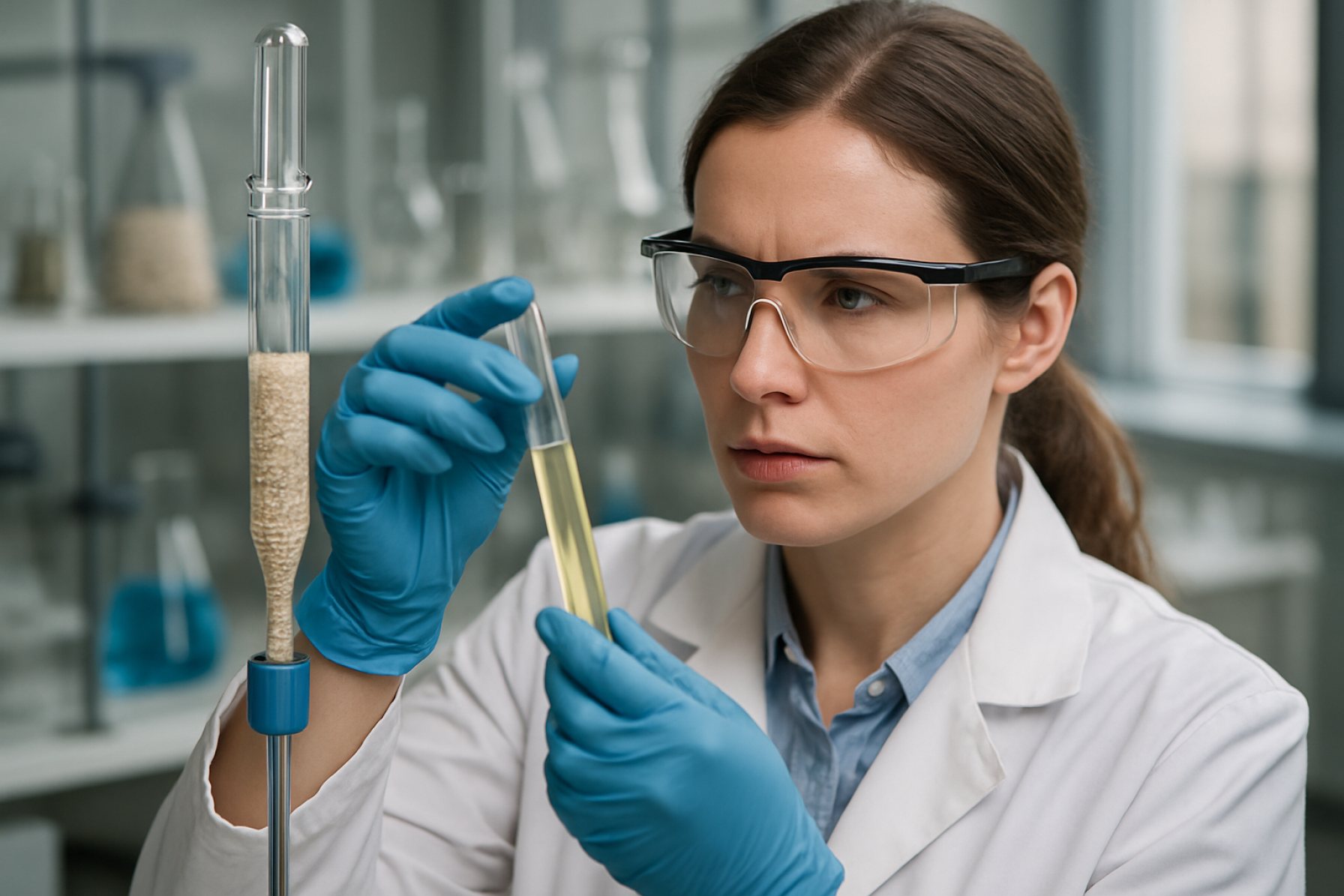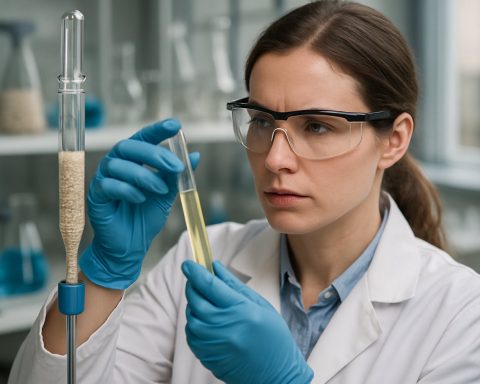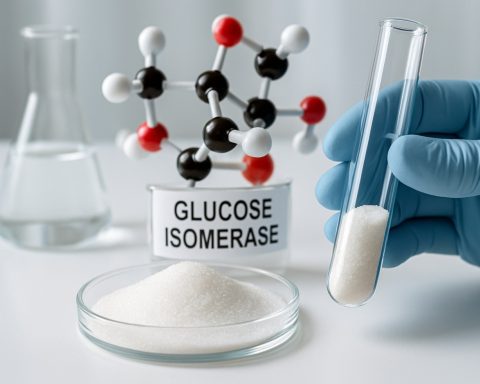Unlocking the Power of Enzyme Immobilization Technology: Transforming Industrial Processes, Sustainability, and Innovation. Discover the Science and Breakthroughs Behind This Game-Changing Biotech Solution.
- Introduction to Enzyme Immobilization Technology
- Historical Evolution and Key Milestones
- Core Methods of Enzyme Immobilization
- Advantages Over Traditional Enzyme Use
- Industrial Applications: From Pharmaceuticals to Food Processing
- Challenges and Limitations in Current Practices
- Recent Innovations and Emerging Trends
- Environmental and Economic Impact
- Future Prospects and Research Directions
- Conclusion: The Road Ahead for Enzyme Immobilization
- Sources & References
Introduction to Enzyme Immobilization Technology
Enzyme immobilization technology refers to the process of confining or attaching enzymes to a solid support, enabling their repeated or continuous use in various industrial and research applications. This approach addresses several limitations associated with the use of free enzymes, such as instability, difficulty in recovery, and loss of catalytic activity over time. By immobilizing enzymes, it is possible to enhance their operational stability, facilitate their separation from reaction mixtures, and improve their reusability, which is particularly valuable in large-scale biocatalytic processes.
The development of enzyme immobilization techniques has significantly expanded the utility of enzymes in sectors such as pharmaceuticals, food processing, biofuels, and environmental remediation. Common methods for immobilization include adsorption, covalent binding, entrapment, and encapsulation, each offering distinct advantages and challenges depending on the nature of the enzyme and the intended application. For instance, covalent binding provides strong attachment and minimizes enzyme leaching, while entrapment and encapsulation can protect enzymes from harsh reaction conditions but may limit substrate accessibility.
Recent advances in material science and nanotechnology have further propelled the field, enabling the design of novel supports with tailored properties to optimize enzyme performance. The integration of immobilized enzymes into continuous flow reactors and biosensors exemplifies the growing impact of this technology on process efficiency and sustainability. As industries increasingly seek greener and more cost-effective solutions, enzyme immobilization technology continues to play a pivotal role in advancing biocatalysis and industrial biotechnology Food and Agriculture Organization of the United Nations, National Center for Biotechnology Information.
Historical Evolution and Key Milestones
The historical evolution of enzyme immobilization technology traces back to the early 20th century, with foundational experiments that set the stage for modern biocatalysis. The first significant milestone occurred in 1916, when Nelson and Griffin demonstrated the adsorption of invertase onto charcoal and aluminum hydroxide, establishing the feasibility of enzyme attachment to solid supports. However, it was not until the 1960s that enzyme immobilization gained momentum, driven by the need for reusable and stable biocatalysts in industrial processes. The development of covalent binding techniques and the use of synthetic polymers as supports marked a turning point, enabling enhanced enzyme stability and activity retention.
The 1970s and 1980s saw rapid advancements, with the introduction of entrapment and encapsulation methods, such as the use of calcium alginate beads and sol-gel matrices. These innovations allowed for greater control over enzyme microenvironments and mass transfer properties. The commercialization of immobilized enzymes, notably in the production of high-fructose corn syrup using immobilized glucose isomerase, underscored the technology’s industrial relevance. Further milestones include the advent of affinity-based immobilization and the integration of nanomaterials in the 21st century, which have expanded the range of applications and improved enzyme performance.
Today, enzyme immobilization technology is pivotal in sectors ranging from pharmaceuticals to environmental engineering, with ongoing research focused on optimizing support materials, immobilization methods, and process scalability. The evolution of this technology reflects a continuous interplay between scientific innovation and industrial demand, as documented by organizations such as the Elsevier and the Springer.
Core Methods of Enzyme Immobilization
Enzyme immobilization technology relies on several core methods to attach enzymes to solid supports, thereby enhancing their stability, reusability, and operational control in industrial and research applications. The primary methods include adsorption, covalent binding, entrapment, and encapsulation, each offering distinct advantages and limitations.
Adsorption is the simplest technique, where enzymes adhere to the surface of carriers such as activated carbon, silica, or polymers through weak forces like van der Waals interactions or hydrogen bonding. While this method is cost-effective and preserves enzyme activity, it is prone to enzyme leaching under changing conditions (National Center for Biotechnology Information).
Covalent binding involves forming stable covalent bonds between enzyme functional groups and activated supports. This method significantly reduces enzyme leakage and enhances operational stability, but may sometimes alter the enzyme’s active site, affecting its activity (Elsevier).
Entrapment physically confines enzymes within a matrix such as alginate, polyacrylamide, or sol-gel, allowing substrate and product diffusion while restricting enzyme movement. This approach minimizes enzyme loss but can limit substrate accessibility and diffusion rates (MDPI).
Encapsulation encloses enzymes within semi-permeable membranes or microcapsules, providing a protective environment and reducing denaturation. However, mass transfer limitations can occur, especially with larger substrates (Frontiers).
The choice of immobilization method depends on the specific application, desired enzyme properties, and operational requirements, making it a critical consideration in the design of biocatalytic processes.
Advantages Over Traditional Enzyme Use
Enzyme immobilization technology offers several significant advantages over the use of free (soluble) enzymes in industrial and biotechnological applications. One of the primary benefits is enhanced enzyme stability. Immobilized enzymes are often more resistant to changes in temperature, pH, and the presence of organic solvents, which extends their operational lifespan and reduces the frequency of enzyme replacement. This increased stability is particularly valuable in processes requiring harsh reaction conditions, such as those found in the pharmaceutical and chemical industries (National Center for Biotechnology Information).
Another key advantage is the ease of enzyme recovery and reuse. Immobilized enzymes can be readily separated from reaction mixtures, allowing for multiple cycles of use without significant loss of activity. This reusability leads to substantial cost savings and improved process efficiency, making immobilized enzymes economically attractive for large-scale operations (Food and Agriculture Organization of the United Nations).
Additionally, immobilization can minimize product contamination, as the enzyme remains fixed to a support and does not mix with the final product. This is especially important in food and pharmaceutical manufacturing, where product purity is critical. Immobilized systems also facilitate the design of continuous processes, such as packed-bed reactors, which further enhance productivity and scalability (Elsevier).
Overall, enzyme immobilization technology addresses many limitations of traditional enzyme use, offering improved stability, reusability, product purity, and process control, thereby driving innovation and efficiency in various industrial sectors.
Industrial Applications: From Pharmaceuticals to Food Processing
Enzyme immobilization technology has revolutionized industrial processes by enhancing enzyme stability, reusability, and operational control, making it indispensable across diverse sectors such as pharmaceuticals, food processing, textiles, and biofuels. In the pharmaceutical industry, immobilized enzymes are pivotal for the synthesis of chiral intermediates and active pharmaceutical ingredients (APIs), offering high specificity and reduced by-product formation. This leads to more efficient and sustainable drug manufacturing processes, as highlighted by European Medicines Agency. In food processing, immobilized enzymes facilitate continuous production systems, improving product consistency and reducing costs. For example, immobilized lactase is widely used to produce lactose-free dairy products, while immobilized lipases and proteases enhance flavor development and protein hydrolysis in cheese and meat processing (U.S. Food and Drug Administration).
Beyond these, the textile industry benefits from immobilized enzymes in processes such as bio-polishing and desizing, which improve fabric quality and reduce environmental impact. In biofuel production, immobilized cellulases and amylases enable efficient conversion of biomass to fermentable sugars, supporting sustainable energy initiatives (International Energy Agency). The reusability of immobilized enzymes also reduces operational costs and waste generation, aligning with green chemistry principles. As industries increasingly prioritize sustainability and efficiency, enzyme immobilization technology is expected to play an even greater role in the development of innovative, eco-friendly manufacturing processes across multiple sectors.
Challenges and Limitations in Current Practices
Despite the significant advancements in enzyme immobilization technology, several challenges and limitations persist, impacting its broader industrial adoption and efficiency. One major issue is the potential loss of enzyme activity during the immobilization process. Physical and chemical methods, such as covalent binding or entrapment, can alter the enzyme’s conformation, leading to reduced catalytic efficiency. Additionally, mass transfer limitations often arise, particularly when enzymes are immobilized within porous matrices, restricting substrate accessibility and product release. This can significantly decrease reaction rates, especially in large-scale applications.
Another challenge is the leaching of enzymes from the support material, particularly in non-covalent immobilization techniques. This not only reduces the operational stability of the biocatalyst but also contaminates the product stream, necessitating additional purification steps. The cost and complexity of support materials also pose economic barriers, as high-quality carriers and sophisticated immobilization protocols can be expensive and difficult to scale up. Furthermore, the reuse and regeneration of immobilized enzymes remain problematic, as repeated cycles can lead to gradual deactivation or detachment from the support.
Finally, the specificity of immobilization methods for different enzymes and processes limits the universal applicability of current technologies. Tailoring immobilization strategies to individual enzymes often requires extensive optimization, which can be time-consuming and resource-intensive. Addressing these challenges is crucial for the development of more robust, cost-effective, and versatile enzyme immobilization systems for industrial and biomedical applications (National Center for Biotechnology Information; Elsevier).
Recent Innovations and Emerging Trends
Recent innovations in enzyme immobilization technology are transforming both industrial and biomedical applications by enhancing enzyme stability, reusability, and activity. One significant trend is the development of novel support materials, such as nanomaterials (e.g., magnetic nanoparticles, carbon nanotubes, and metal-organic frameworks), which offer high surface area, tunable porosity, and improved biocompatibility. These materials facilitate more efficient enzyme loading and better control over enzyme orientation, leading to higher catalytic performance and easier recovery of immobilized enzymes Nature Reviews Chemistry.
Another emerging trend is the use of advanced immobilization techniques, including covalent bonding, encapsulation, and cross-linking, often combined with microfluidic and 3D printing technologies. These approaches enable precise spatial arrangement of enzymes, multi-enzyme co-immobilization, and the creation of enzyme cascades for complex biotransformations. For example, 3D-printed scaffolds can be engineered to optimize mass transfer and minimize diffusion limitations, significantly improving process efficiency Materials Today.
Additionally, the integration of enzyme immobilization with digital and smart technologies is gaining momentum. Responsive materials that alter enzyme activity in response to environmental stimuli (e.g., pH, temperature, or light) are being explored for use in biosensors and smart reactors. These innovations are paving the way for more sustainable, cost-effective, and versatile biocatalytic processes across sectors such as pharmaceuticals, food, and environmental remediation MDPI Catalysts.
Environmental and Economic Impact
Enzyme immobilization technology has significant environmental and economic implications, particularly in industrial bioprocesses. By anchoring enzymes onto solid supports, this technology enhances enzyme stability, reusability, and operational control, which directly translates into reduced resource consumption and waste generation. In environmental terms, immobilized enzymes facilitate cleaner production processes by minimizing the need for harsh chemicals and lowering the generation of toxic byproducts. For example, in wastewater treatment, immobilized enzymes can efficiently degrade pollutants, offering a sustainable alternative to conventional chemical treatments and contributing to improved water quality (United States Environmental Protection Agency).
Economically, enzyme immobilization reduces operational costs by enabling enzyme recovery and repeated use, which is particularly valuable in large-scale applications such as food processing, pharmaceuticals, and biofuel production. The extended lifespan of immobilized enzymes decreases the frequency of enzyme replacement, leading to lower raw material costs and less downtime for process maintenance. Additionally, the enhanced process efficiency and product yield associated with immobilized enzymes can improve overall profitability (Organisation for Economic Co-operation and Development).
Despite these advantages, the initial investment in immobilization materials and technology can be substantial. However, the long-term savings and environmental benefits often outweigh the upfront costs, especially as advances in material science and process engineering continue to drive down expenses and improve performance (International Energy Agency). As industries increasingly prioritize sustainability, enzyme immobilization technology is poised to play a pivotal role in achieving greener and more cost-effective manufacturing processes.
Future Prospects and Research Directions
The future of enzyme immobilization technology is poised for significant advancements, driven by the demand for more efficient, sustainable, and cost-effective biocatalytic processes. Emerging research is focusing on the development of novel immobilization materials, such as nanostructured supports, metal-organic frameworks (MOFs), and hybrid organic-inorganic matrices, which offer enhanced enzyme stability, activity, and reusability. These innovative supports can be tailored to specific industrial applications, improving process efficiency and reducing operational costs. Additionally, the integration of enzyme immobilization with microfluidic and continuous-flow systems is gaining traction, enabling real-time process monitoring and high-throughput screening for biocatalyst optimization.
Another promising direction involves the use of genetic and protein engineering to design enzymes with improved compatibility for immobilization, further enhancing their performance in harsh industrial environments. The combination of immobilization techniques with advanced computational modeling and machine learning is also expected to accelerate the rational design of immobilized biocatalysts, optimizing both support materials and enzyme properties for targeted applications.
Sustainability remains a key focus, with research exploring biodegradable and renewable support materials to minimize environmental impact. Furthermore, the application of immobilized enzymes is expanding beyond traditional sectors such as food and pharmaceuticals, into areas like environmental remediation, biofuel production, and biosensing. Continued interdisciplinary collaboration and investment in research infrastructure will be essential to realize the full potential of enzyme immobilization technology in the coming years (Nature Reviews Chemistry; Materials Today).
Conclusion: The Road Ahead for Enzyme Immobilization
Enzyme immobilization technology has evolved into a cornerstone of modern biocatalysis, offering enhanced enzyme stability, reusability, and process control across diverse industrial sectors. As the demand for sustainable and cost-effective bioprocesses intensifies, the future of enzyme immobilization is poised for significant advancements. Emerging materials such as nanostructured supports, smart polymers, and bioinspired matrices are expected to further improve enzyme activity and selectivity, while minimizing mass transfer limitations. Additionally, the integration of immobilized enzymes with continuous flow reactors and microfluidic systems promises to revolutionize process intensification and scalability in pharmaceutical, food, and environmental applications.
The convergence of enzyme engineering and immobilization strategies is another promising avenue, enabling the design of tailor-made biocatalysts with optimized performance for specific industrial needs. Advances in computational modeling and high-throughput screening are accelerating the discovery of novel immobilization methods and support materials, fostering innovation in this field. However, challenges remain, including the need for cost-effective large-scale production, improved enzyme-support compatibility, and the development of universal immobilization protocols.
Looking ahead, the successful translation of laboratory breakthroughs into industrial practice will depend on interdisciplinary collaboration and the adoption of green chemistry principles. As regulatory frameworks evolve and market demand for sustainable solutions grows, enzyme immobilization technology is set to play a pivotal role in shaping the future of biomanufacturing and environmental remediation Nature Reviews Chemistry Materials Today.
Sources & References
- Food and Agriculture Organization of the United Nations
- National Center for Biotechnology Information
- Elsevier
- Springer
- Frontiers
- European Medicines Agency
- International Energy Agency
- Nature Reviews Chemistry











